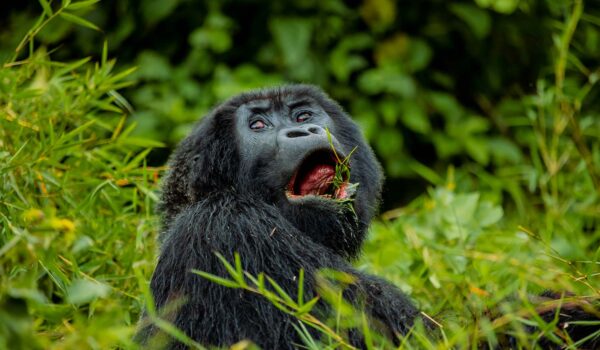Congo National Parks
Thanks to its extensive network of national parks, the Democratic Republic of the Congo (DRC) is home to some of the world’s most biodiverse environments. These parks are home to rare and endangered species of animals. The DRC’s national parks serve as a monument to the significance of biodiversity conservation, despite the fact that political and societal upheaval has made it very difficult to manage and conserve these natural treasures. The Congo’s major national parks, Virunga, Kahuzi-Biega, Salonga, and Garamba, are home to a wide range of wildlife that are essential to their own ecosystems.
National Park Virunga
Situated in the eastern Democratic Republic of Congo, Virunga National Park is the oldest national park in Africa and a UNESCO World Heritage site. It is one of the continent’s most biologically diversified parks, spanning 7,800 square kilometers over forests, savannahs, lakes, and volcanoes.
The Virunga is well-known for its severely endangered mountain gorilla population. These magnificent animals reside in family groups headed by a dominant silverback and are quite gregarious. In addition, the park is home to chimpanzees, lowland gorillas, and many other primate species. The Virunga is home to lions, okapis, hippos, elephants, and monkeys. In addition to offering home for a multitude of bird species, its lakes and rivers draw a diverse array of aquatic life. Nevertheless, poaching and instability in the region have made it difficult to conserve species, making the Virunga one of the most vulnerable protected areas.
The National Park of Kahuzi-Biega
Another UNESCO World Heritage site is Kahuzi-Biega National Park, which is located close to Lake Kivu in the country’s east. Mostly a tropical rainforest, the park is named after two extinct volcanoes, Mount Kahuzi and Mount Biega. The biggest gorilla subspecies, the endangered eastern lowland gorilla, has one of its few remaining strongholds in this park.
Along with gorillas, Kahuzi-Biega is home to forest elephants, who are smaller than their savannah relatives and have evolved to live in deep woods, as well as other primates including colobus monkeys and baboons. The park is a crucial location for bird conservation as it is home to a number of unique bird species. Similar to Virunga, illicit hunting, logging, and mining pose a danger to Kahuzi-Biega, affecting the park’s conservation initiatives.
National Park Salonga
The biggest tropical rainforest reserve in Africa is Salonga National Park, which is located in the center of the Congo Basin and spans around 36,000 square kilometers. The park, which offers a comparatively undisturbed environment for a variety of species, is difficult to reach due to its deep forest and isolated position.
One of our closest genetic cousins, the bonobo, are a significant feature of Salonga. Bonobos are indigenous to the Congo Basin and are renowned for their harmonious, cooperative social systems. Other species found in the park include the endangered forest elephant, Congo peafowl, and African slender-snouted crocodile. Its marshy, moist environment contributes to its natural diversity by providing a perfect habitat for many aquatic species. Salonga has been less affected by direct human encroachment because of its distant location, but it is nevertheless vulnerable to resource exploitation and unlawful poaching.
The National Park of Garamba
The grassland and woodland habitats of Garamba National Park, a World Heritage site in the northeastern Democratic Republic of the Congo, stand in stark contrast to the rainforest ecosystems of the country’s other national parks. Although poaching has caused the northern white rhinoceroses to become extinct in the park, Garamba was previously known for them. Elephants, giraffes, hippos, and the Congo lion are just a few of the amazing animals that still call Garamba home today.
Additionally, the park is home to one of the biggest groups of critically endangered Kordofan giraffes. Garamba is one of the few locations in the Congo where huge herbivores wander open plains, and its diverse habitats sustain a vast diversity of bird species. However, poaching is a persistent danger to the park’s animals, and the region’s instability makes attempts to protect its biodiversity difficult.
The Democratic Republic of the Congo’s national parks serve as invaluable habitats for some of the rarest and most amazing animals on the planet. The preservation of species that are unique to the Congo Basin depends heavily on each park. Local people, international organizations, and conservationists continue to work to maintain these remarkable ecosystems in spite of obstacles including habitat degradation, poaching, and political instability.

